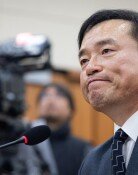[Opinion] Kap-sin Reshuffle
In 1689, when the ruling of King Sukjong in Choson Dynasty had reached 16 years, he pursued relations with his favorite royal concubine, Jang Ok-jeong (Jang Hee-bin), as the necessity of the future Crown Prince was at stake. Up until then, Queen Inhyeon had not providing offspring for King Sukjong, and also failed to get love from the King. Thus, he convened high-ranking officials including Samjeongseung (the highest three positions in government) and Yukjodaesin (six ministers) and forced them to accept his decision or they would be kicked out of the palace. As a result, those who stood up to King Sukjong without waning in their will, such as Song Si-yeol and Kim Su-hang, stepped down from their positions and consequently the highest three positions in government were replaced by Nam-in (Northern Faction); as many as about 100 officials were condemned to exile. Since this reshuffle occurred in Ki-sa nyeon (the year of 1689), we call it the Ki-sa Reshuffle.
Such a reshuffle was mainly used as a means to replace government officials who were not in accord with the Kings policy stance. King Sukjong, who wanted to strengthen his power by checking the intervention of Sadaebu (usually government officials with holding high social status), launched such reshuffles three times under his reignKyeng-sin (1680), Ki-sa (1689), Kapsul (1694). Each time, ruling factions were replaced and those who were in power could not avoid the early demise of their careers. King Sukjong, who was close in nature to a dictator, used such tools often. Forty years later (1737), when the side-effects of this trend were in full swing, King Young-jo, with the intention of preventing useless party squabbles, nurturing human resources regardless of parties, and balancing the power, embarked on Tangpyeongchaek, through which he released a great number of political prisoners and attempted to reach harmony in politics.
With the 2004 general election just two months away, the nation is entering into the Season for Politics. The process of nominating candidates has drawn the most attention among people, and politicians, who are going to run the election, are buzzing around. The election is a legal procedure allowing people to establish a new political power in accordance with their free will. In other words, rather than the reshuffle made by the order of King, democratic reshuffles are coming to us with an important political opportunity. In the face of the election, following scandals caused by illegal campaign funds, big figures in politics have been arrested and detained--gradually nipping at the buds of political corruption. Also, it seems to be a reflection of the national will, longing for dramatic reform in the political arena. Recent trends in the investigation, however, give us an impression that the focus of it resides primarily in the opposition party and those who were in power during the past Korean politics. Of course, there is no doubt that corrupted politicians sincerely deserve the punishment. However, intellectuals advice for harmonious politics by working together with those who underwent such punishments, have been overwhelmed by an unprecedented hit of political reform. This year, 2004, is Kap-sin nyeon, and might be remembered as the Kap-sin Reshuffle.
Editorial Writer, Professor of Seoul National University, Song Ho-gen
hknsong@snu.ac.kr





![‘치매머니 사냥’ 요양원도 휩쓸어…통장 텅 비어 간식비도 못내 [히어로콘텐츠/헌트③-上]](https://dimg.donga.com/c/138/175/90/1/wps/NEWS/IMAGE/2025/12/16/132980393.1.jpg)

